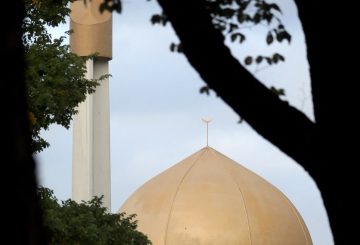Seorang anggota dewan kota telah menyatakan keprihatinan bahwa pengumpulan sampah mingguan Auckland dapat dikurangi menjadi layanan dua minggu yang kurang nyaman. Sebuah rancangan Rencana Pengelolaan dan Minimisasi Sampah Dewan Auckland untuk tahun 2024 menyarankan perpindahan ke pengumpulan sampah dua minggu sekali, tetapi hanya setelah tempat sampah makanan tepi jalan ditetapkan dengan baik.
Tujuan dewan adalah untuk mendorong pengurangan limbah. Namun, Anggota Dewan Manurewa-Papakura Daniel Newman percaya bahwa pengumpulan sisa makanan harus melengkapi, bukan menggantikan, pengumpulan sampah mingguan. Dia menggambarkan perubahan yang diusulkan sebagai salah satu saran yang paling tidak nyaman dan belum terbukti yang pernah dibuat oleh petugas dewan, dan memperkirakan itu akan sangat tidak populer di kalangan banyak penduduk Auckland.
Newman berpendapat bahwa harus terserah rumah tangga Auckland, bukan politisi dan staf dewan, untuk memutuskan apakah mereka membutuhkan sampah mereka dikumpulkan setiap minggu. Dia menuduh beberapa anggota dewan mencoba memaksakan perubahan perilaku di warga Auckland dengan menolak pilihan mereka. Dia juga mendorong penduduk untuk menyuarakan pendapat mereka tentang rencana dewan, memperingatkan bahwa layanan pengumpulan sampah mingguan dapat berisiko kecuali warga Auckland membujuk dewan untuk menyimpannya.
Rancangan dewan juga menyebutkan bahwa itu harus mendukung penduduk yang khawatir pindah ke koleksi setiap dua minggu, terutama mereka yang berada di rumah tangga besar. The New Zealand Herald melaporkan bahwa pengurangan layanan dapat dimulai dari 2026. Tujuannya adalah untuk mengurangi sampah tepi jalan dari awal tahun 2022 sebesar 141 kg menjadi 120 kg per orang pada tahun 2028 dan menjadi 100 kg pada tahun 2030. Peluncuran umum tempat sampah makanan baru-baru ini diharapkan dapat membantu mencapai hal ini dengan mengurangi hingga 41 persen isi tempat sampah berdasarkan berat. Saat ini, dewan mengumpulkan tempat sampah yang dapat didaur ulang dua minggu sekali.
Dewan telah mengakui defisit anggaran, dengan potensi penjualan aset dan kenaikan suku bunga yang signifikan sedang dipertimbangkan. Beberapa saham dewan di Bandara Auckland telah dijual, dan Walikota Wayne Brown telah menyarankan untuk menjual sewa jangka panjang ke Port of Auckland dan menginvestasikan hasilnya ke dalam dana investasi baru $3 miliar hingga $4 miliar. Namun, Anggota Dewan Mike Lee dan John Watson telah mengkritik proposal tersebut, dengan Lee menyebutnya “strip aset” dan Watson memperingatkan bahwa kota akan kehilangan kendali atas aset utama selama masa sewa.



























































